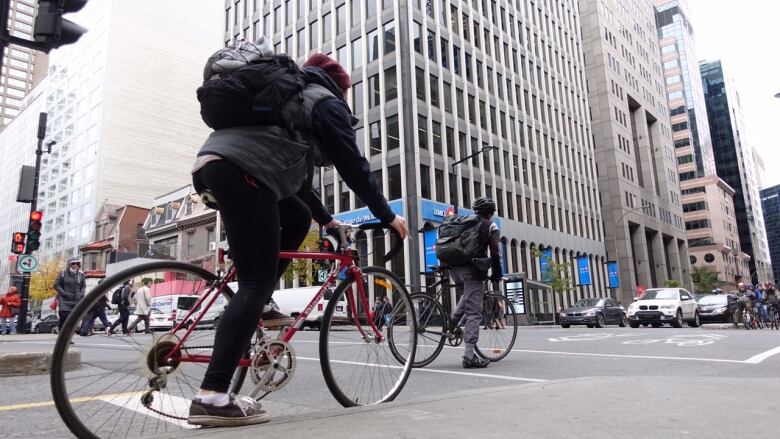Combined lanes for buses and bikes not the solution, cycling advocates say
Mayor Denis Coderre's administration considering major overhaul of city arteries

Montreal's possible plan to add combined bus-bike lanes to some of the city's major streets is being met with skepticism by transportation experts and cycling advocates.
Mayor DenisCoderre'sadministration is considering major changes to some of Montreal's most important arteries, bytaking away a lane for cars and replacing it with a reserve lane for buses and bicycles.
- Montreal could limit cars to 30 km/h in residential areas in wake of cyclist deaths
- Where are Montreal's 10 most dangerous intersections?
Among the streets that could get an overhaul are: Papineau, St-Denis, Sherbrooke, St-Laurent, St-Urbain, Lachapelle, Rosemont and Henri-Bourassa.
Portions of some of themPapineauand deLorimier could also be turned into one-way streets.
While the plans haven't been finalized, the proposal is already facing criticism.
Designated space for bikes
One urban planner says mixing buses with bikes isn't a recipe for success.
"To have this kind of efficiency for bus use is really important. Then, of course,there's the issue of how this affects bike usersand that's a whole other conversation," said MichaelWexler, a project manageratCopenhagenizeDesign Company, a planning firm that consults cities on best practices.

But he said designated bike lanes are a mustif the city wants to encourage cycling.
That's a perspective shared by the Montreal Bike Coalition.
"If you want Montreal to become a world-class city for cycling you must provide protected intersections, especially on arteries, so that they can get to their destination directly, just as if they were driving," said Daniel Lambert, the group's spokesperson.
Creating separate sections on the road for bikes and buses carries a high price tag, however. It would also likely mean cutting into either parking or road space.
Devil in the details
MagaliBebronne, a member ofVloQubec, said research suggests ashared lane for bikes and buses can work in some circumstancesand can be dangerous in others.
The contributing factors include the width of the lane,the speed of traffic on the street andwhether there is a clear division between the areasdesignated for bikes and buses.

The Opposition at City Hall,Projet Montral, hasn't come out against the plans, but argues the decisions shouldn't be made in secret.
The debate comes following a difficult summer for cycling in Montreal, in which there were several high-profile accidents.
A panel discussionfeaturing local politicians, cycling advocates and urban planners, is took place Thursday eveningto discuss how to improve transportation safety in the city.












_(720p).jpg)


 OFFICIAL HD MUSIC VIDEO.jpg)
.jpg)



























































































